Thief's brilliant subtlety is still unmatched
Deus Ex? Timeless. Dishonored? Fantastic. But Thief still has the smartest foreshadowing in the history of immersive sims.
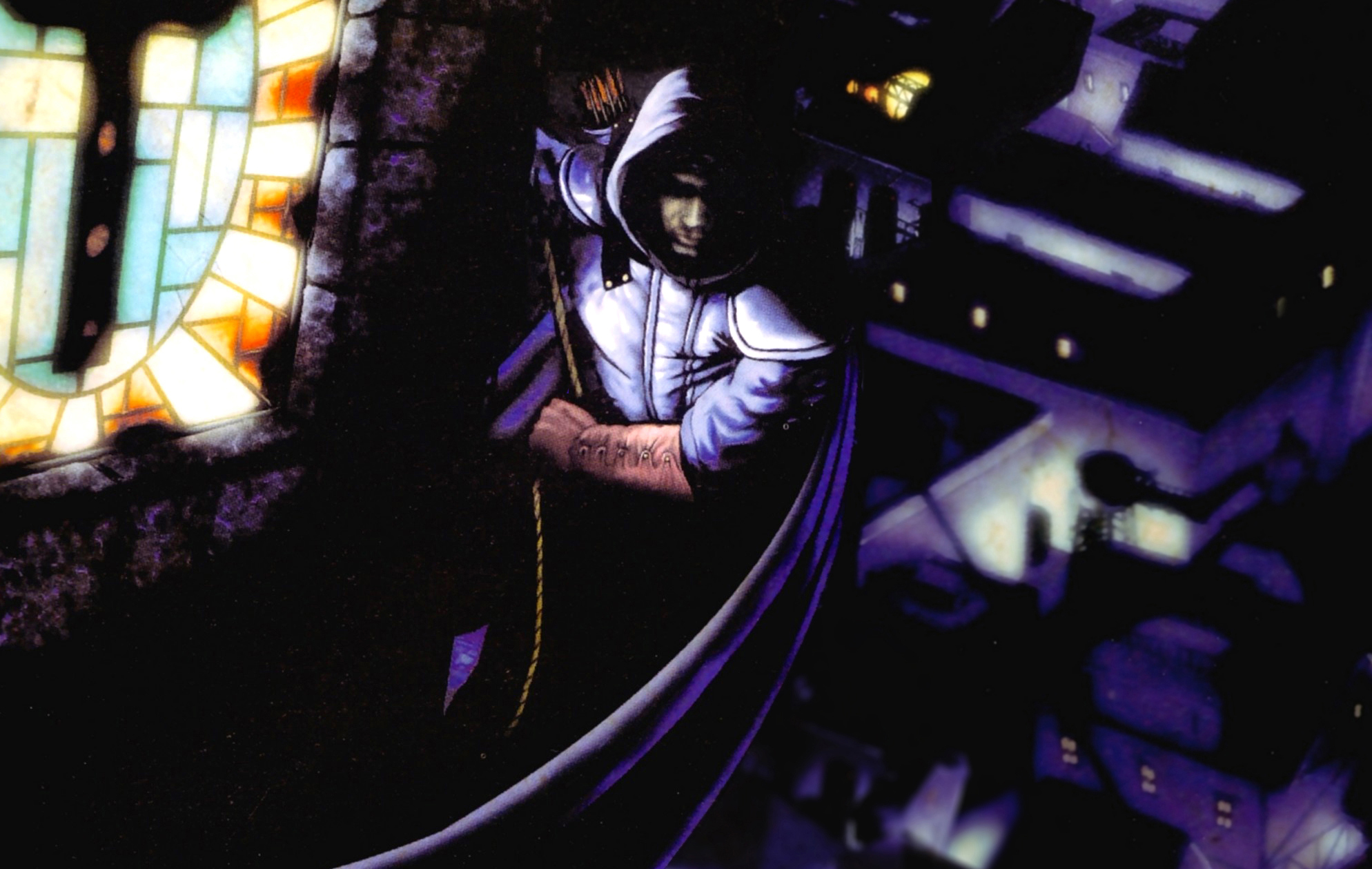
At the end of Thief: The Dark Project, one of its characters muses on the future. “Beware the dawn of the Metal Age,” he says, looking out over the steampunk city. That line was contributed by Terri Brosius, one of the game's writers and designers as well as the voice of Viktoria (she also provided the memorable voice of System Shock 2's villain Shodan). The dialogue was a spur-of-the-moment addition, but it helped shape the series. Thief II would eventually be given The Metal Age as its subtitle, and the story of an industrial revolution overtaking the city would become its plot.
That's how committed the original trilogy of Thief games are to their foreshadowing, and it's part of what makes them unique among immersive sims.
In Warren Spector's post-mortem of Deus Ex all the way back in the year 2000, he used the term 'immersive sim' to describe the type of game he and Ion Storm had created. Deus Ex needed its own subgenre because it is, as he put it, "part role-playing game, part first-person shooter, part adventure game." Immersive sims are games that combine elements of other genres so you can play them your own way, with multiple paths to discover, each of which lets you jump genres as you please. These are the games where you can get past obstacles by talking or sneaking or killing, or sometimes even hacking them or casting spells at them or flying right over the top.
All that variability, all those systems intersecting to encourage player choice and freedom, are what it takes to count as an immersive sim. They don't require a conflict between philosophically distinct factions going on behind the scenes, but it's a common element nonetheless. Deus Ex has its Illuminati, System Shock 2 has the Many versus Shodan, Vampire: The Masquerade – Bloodlines has competing undead clans, Dishonored has the Hound Pit Pub loyalists acting against the spymaster's conspiracy, and so on. In the Thief trilogy, progenitors of the immersive sim, it's the religious cults of Hammerites in conflict with Pagans, with the Keepers looking on as kind of referee-assassins.
You can't just dump secret history on a player straight away. Immersive sims are about freedom to choose your own way of playing, and not engaging with a bunch of boring exposition is a valid choice. (These are usually the games where you can jump on a table while someone is talking to you.) Instead designers hint at the backstory, letting players uncover it so we feel like we're learning things we're not supposed to, experiencing the the same rush we get from finding an unlikely method of infiltrating security.
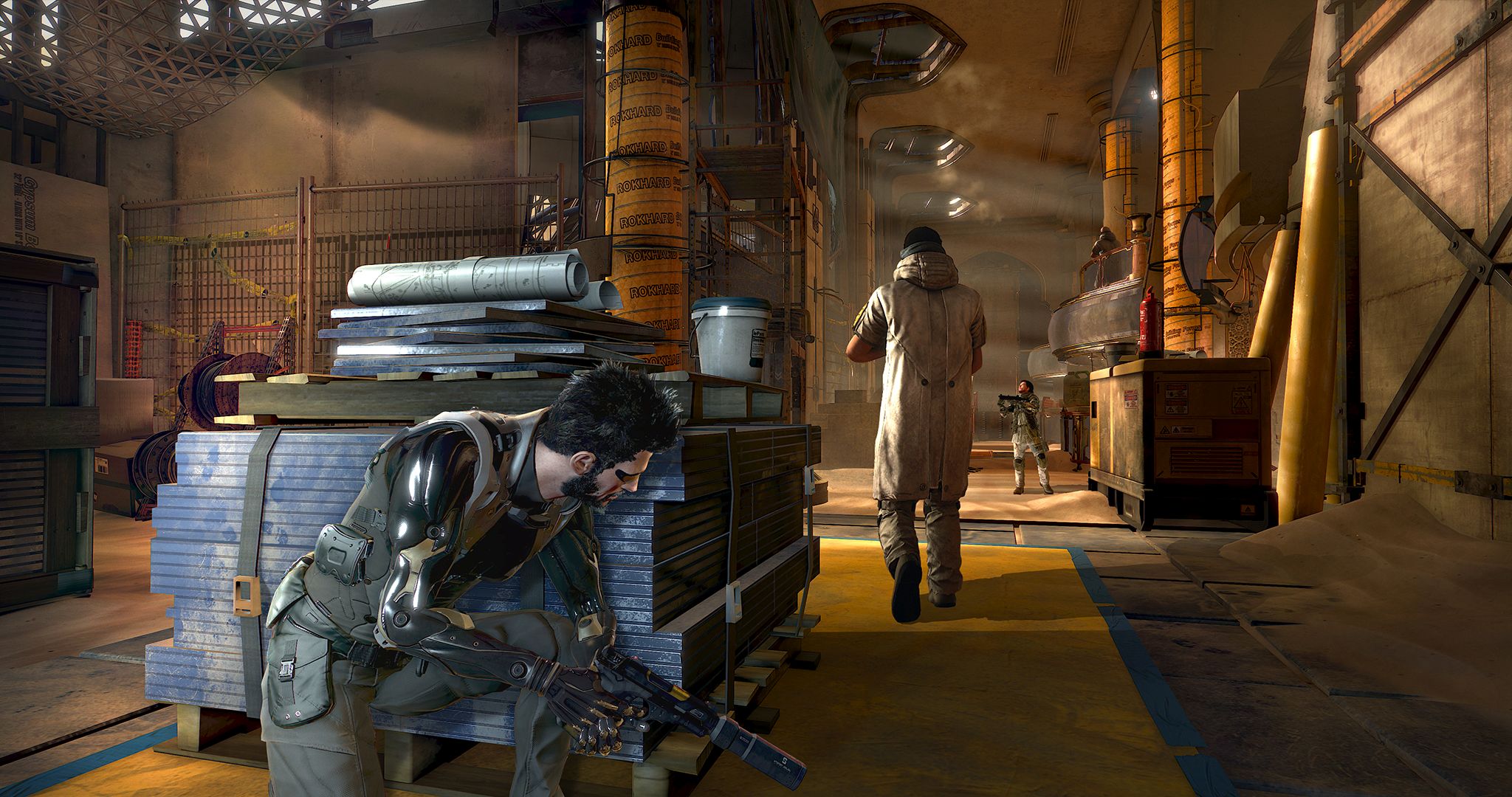
Subtle as a thief
In Thief: The Dark Project, the first of the series, the Pagans are a cult you don't know much about until you realise one of your employers, Viktoria, is a member. By this point you're at least four missions deep and have been facing off against the rival Hammerites since mission two. But as early as the game's opening level, 'Bafford's Manor', there are hints of what's to come.
A letter from one of Bafford's agents describes Viktoria in passing immediately after summarising how the Hammers are interfering with his plans. Each mission's introductory cutscene opens with a quote from a song or prayer, several of which turn out to be Pagan texts. Those things are seeds that will bear terrible fruit later.
Keep up to date with the most important stories and the best deals, as picked by the PC Gamer team.
By the time you meet Viktoria you've probably forgotten the letter that mentions her. It's just one of many pieces of scene-setting in a level that also includes notes to a chef about how to prepare dinner, ledgers of illegal payments, a warning to the guards that they need to lift their game, and a letter about expensive relics worth acquiring. Some of these seem immediately relevant—as a thief those descriptions of valuable relics are useful pointers, as is knowing the guards have a reputation for drunkenness—but others are pure scene-setting.
Thief is full of the kind of scene-setting that broadens your view of its world, and that allows it to hide foreshadowing like this in plain sight. The first conversation you overhear outside Bafford's Manor is two guards arguing about going to the bear pits. One insists it's a good time because the scrawny bears have been fitted with spikes that make them vicious, while the other is old enough to remember when bears were terrifying beasts who didn't need “all that knifery” strapped to them.
While the bear pits are never mentioned again the theme of nature in decline becomes central, and a world where people need to be reminded the natural world is dangerous—as the Pagans plan to—has just been set up.
That's the best kind of worldbuilding: hinting at what's to come without you even realising it, while giving the feeling of a larger world beyond the levels you explore. Contrast that with Dishonored, a game that does many other things very well but is full of dialogue in which characters blatantly foreshadow later levels. During Corvo's prison escape through the sewers you overhear two of the City Watch talking about how scary the Flooded District is, setting up a level there. Granny Rags tells you her parties used to be “even grander than the ones at Boyle Manor”, as you'll see in that level.
If the bear pits conversation happened in Dishonored it would be to foreshadow a level that culminates in choosing whether to assassinate a mechanical bear or free it from servitude to rampage through the Distillery District.
Thief: Deadly Shadows, the third game in the series, has a famous mission set in the Shalebridge Cradle, an abandoned building with a history of horrors that include periods where it was used as an orphanage, an insane asylum, and both at once. If that seems unlikely, Kew Asylum here in Melbourne housed both the mentally ill and wards of the state until the 19th century.
You might hear an optional conversation in the Stonemarket hub about Shalebridge Cradle if you visit the right shop between levels, but you're just as likely to become aware of Shalebridge Cradle in the Old Quarter hub, where it looms over the eastern streets. You've passed its frightening visage and wondered what's up with the world's creepiest building over there before the story's got to the point where you realise you'll need to jump the wall and explore it. You're already dreading the place.
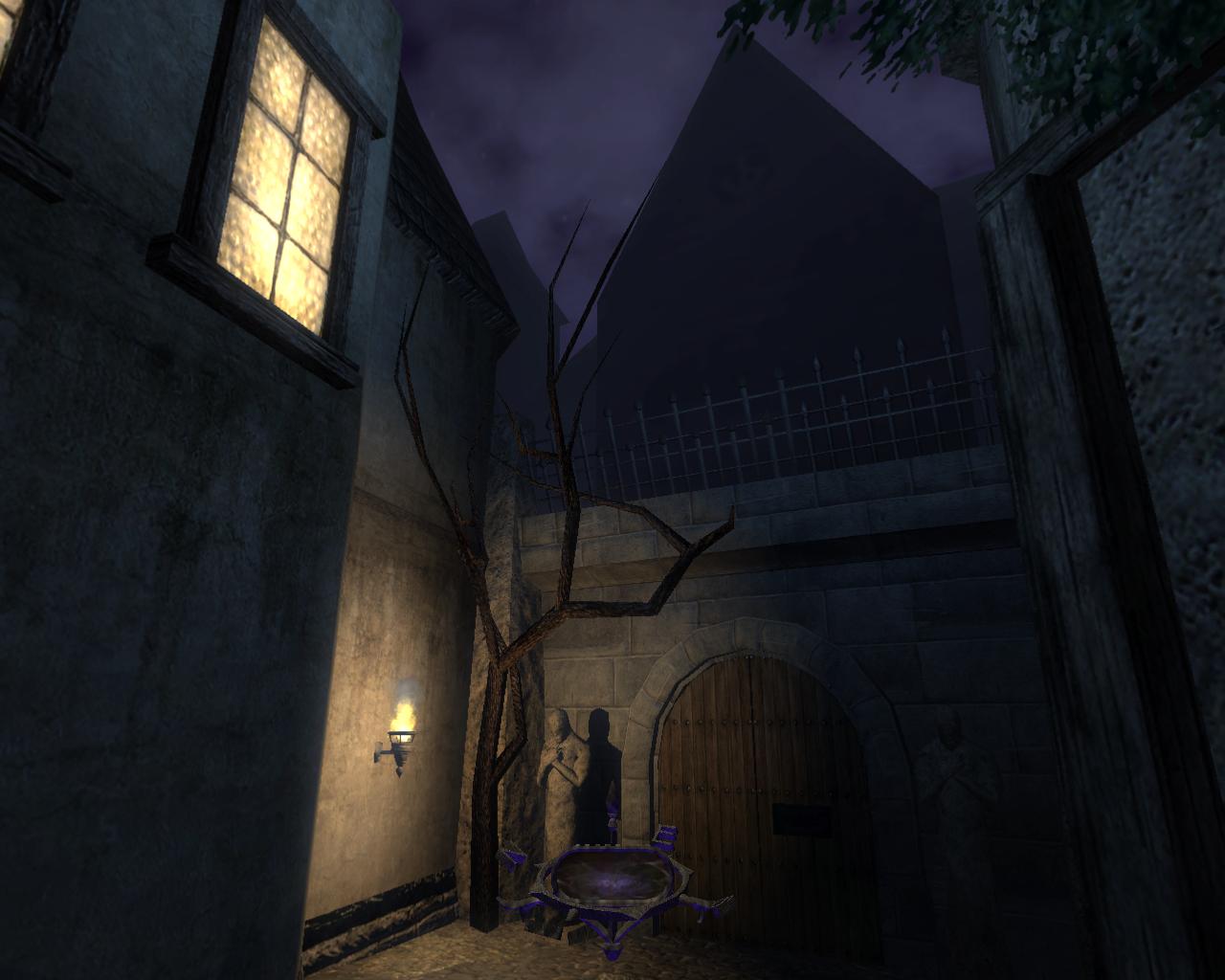
While immersive sims tend to foreshadow both their stories and locations, there's something else they need to hint at as well. These are games defined by their freedom of choice with regard to styles of play, but worried about the possibility players might not notice solutions and try to brute force every problem, shooting their way through and not having a good time.
The first level in Thief to give you complete freedom in how you infiltrate a building is 'Assassins', in which you break into the mansion of a crime boss named Ramirez. The outer wall has an open entrance, but it's guarded, the walkway is well-lit and it's covered in crunchy gravel that makes a lot of noise when you cross it. It's doable, but there are better ways over that wall. Adjacent to a low section of it there's a Tudor-style protrusion with wooden windows, which make perfect targets for a rope arrow. It's also possible to go low-tech and stack crates until you're high enough, which you're clued into by two neatly stacked crates nearby.
Once past the outer wall there's the mansion itself to breach. There are two balconies that can be jumped to from guard towers, which your eyes are drawn to by tiled roof sections that happen to be bright red. A gap in the back of the building is noticeable from a distance because of the distinct shadow it casts.
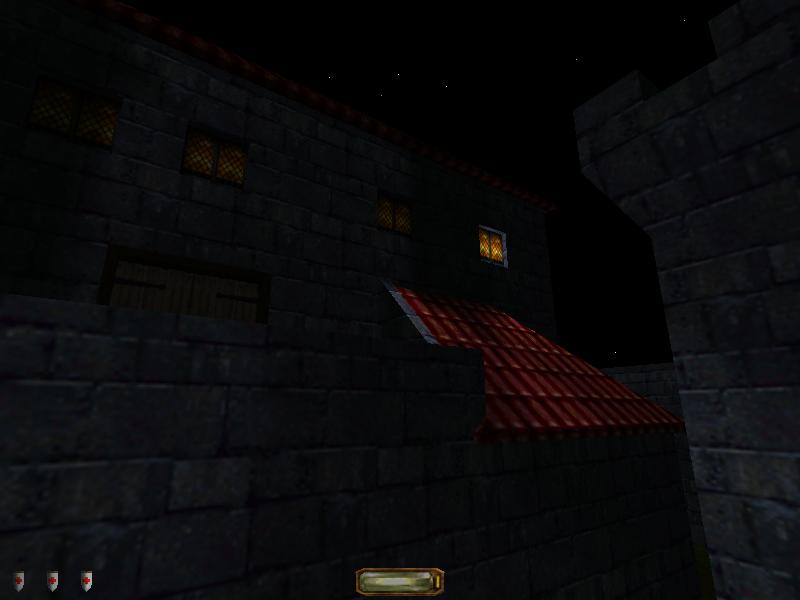
These clues about entrance routes aren't repeated in later levels—you can't trust red roofs and stacked crates forever—but are there to make you realise how many options are available so that you start to hunt for them yourself.
Thief II ramps up the number of secrets within each level, but even with as many as a dozen hidden rooms and stashes to discover their placement is always just as subtle. A shooting range conceals a lever among the arrows embedded in the wall behind the targets, a bookshelf is slightly out of alignment, a glint of light pokes through the edge of a stone in a wall. Compare that to Deus Ex: Human Revolution, which sometimes hides one of the many ducts you can climb into behind a crate but more often plonks them into the corner of rooms beside a neon sculpture.
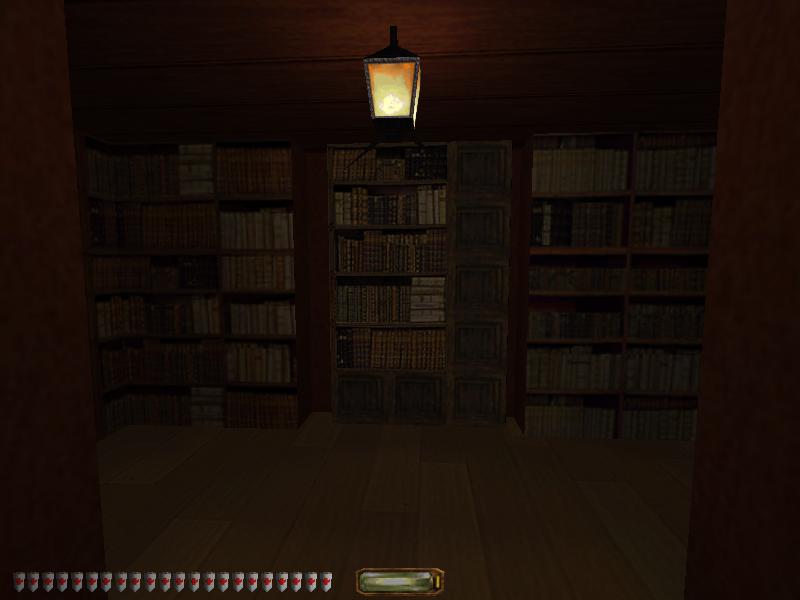
Even harder to notice is the Thief games' use of water as an element of level design. When you transition from the relatively safe streets of the city to the more dangerous interior of Bafford's Manor it's through a well, and when you travel from the empty utility station outside Thief II's Shoalgate Watch House to its well-guarded inside, that's also through water.
The haunted mines below Cragscleft Prison are entered through water, and so is The Lost City. A bridge has to be crossed before you arrive at the manor in 'Assassins', and though you don't have to swim out of the well in 'Precious Cargo' it starts raining once you exit.
In every case water marks a dividing line, emphasising that you've crossed into a high-risk area without the HUD needing to note it. Even if you're unaware of the motif, subconsciously the idea that things are about to get real as soon as you get wet seeps in as you play.
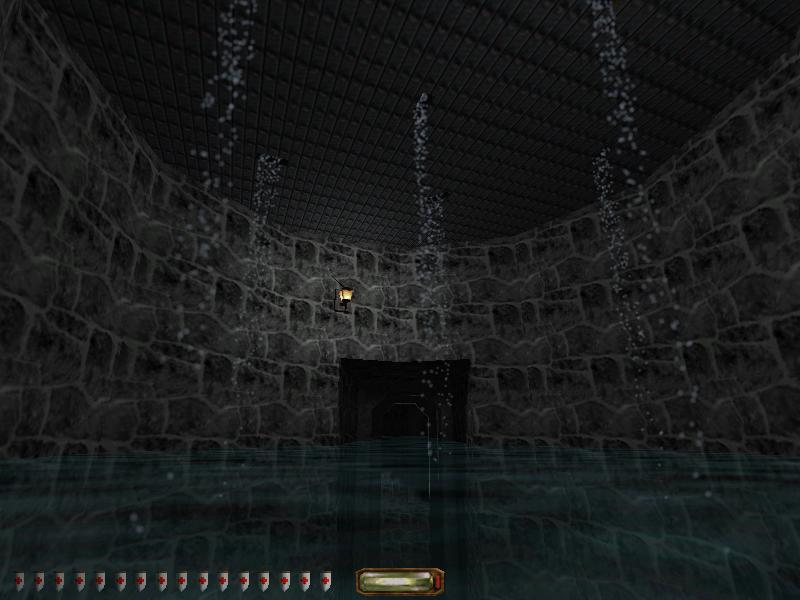
Compared to the original Thief trilogy, other immersive sims feel almost insecure—and more obviously designed—in the ways they lampshade upcoming twists in their story, later levels you'll explore, and the ways you can explore them once you reach them.
With their ubiquitous airduct entry points and audiologs scattered around incongruously to insure you don't miss a single nuance of backstory they rarely surprise us in ways that feel organic. The gun that goes off in act three was not only on the mantelpiece in act one, but two guards talked about the odds of it going off and then recorded the gunshot and left the tape in a nearby trashcan.
Thief lets you know what's possible but does so with subtlety. It's a game about hiding that hides its own possibilities in plain sight, and other immersive sims could learn from that.

Jody's first computer was a Commodore 64, so he remembers having to use a code wheel to play Pool of Radiance. A former music journalist who interviewed everyone from Giorgio Moroder to Trent Reznor, Jody also co-hosted Australia's first radio show about videogames, Zed Games. He's written for Rock Paper Shotgun, The Big Issue, GamesRadar, Zam, Glixel, Five Out of Ten Magazine, and Playboy.com, whose cheques with the bunny logo made for fun conversations at the bank. Jody's first article for PC Gamer was about the audio of Alien Isolation, published in 2015, and since then he's written about why Silent Hill belongs on PC, why Recettear: An Item Shop's Tale is the best fantasy shopkeeper tycoon game, and how weird Lost Ark can get. Jody edited PC Gamer Indie from 2017 to 2018, and he eventually lived up to his promise to play every Warhammer videogame.

